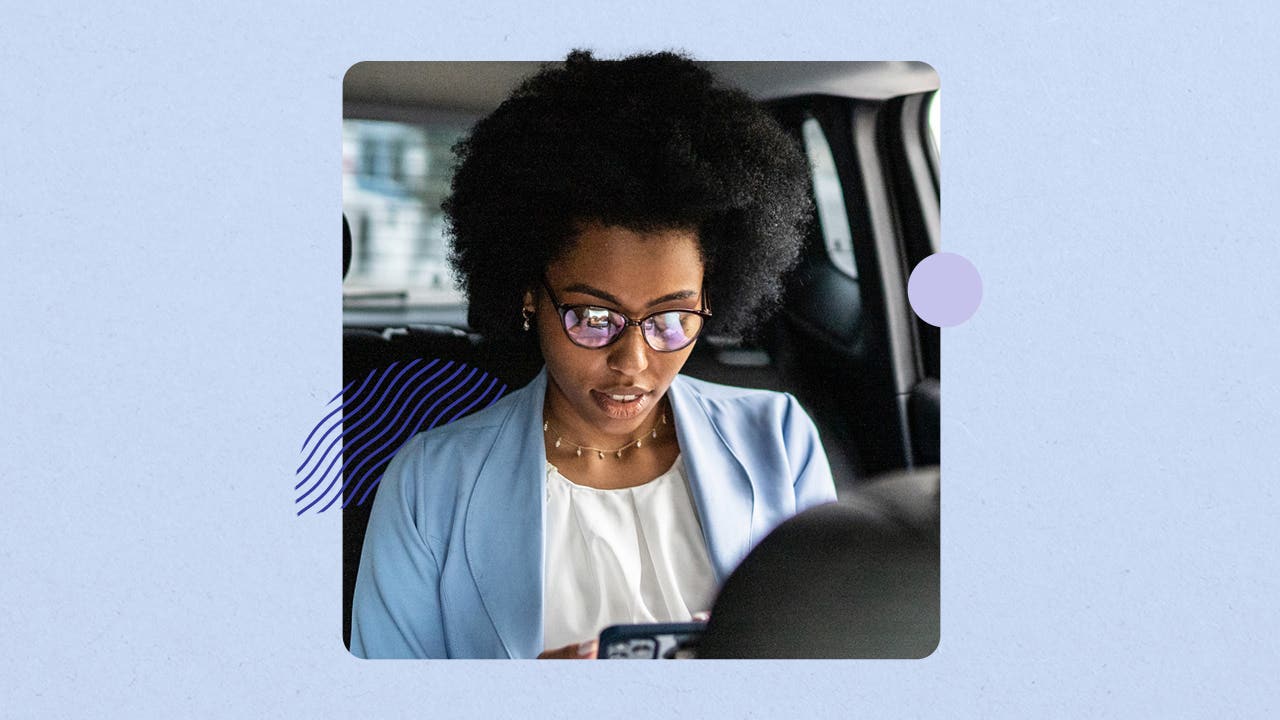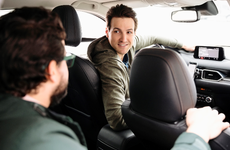Rideshare safety and statistics

The Bankrate promise
At Bankrate, we strive to help you make smarter financial decisions. To help readers understand how insurance affects their finances, we have licensed insurance professionals on staff who have spent a combined 47 years in the auto, home and life insurance industries. While we adhere to strict , this post may contain references to products from our partners. Here's an explanation of . Our content is backed by Coverage.com, LLC, a licensed entity (NPN: 19966249). For more information, please see our .
More and more Americans are using rideshare apps like Uber and Lyft. With a few clicks, you can easily request a ride to get almost anywhere you need to go, but how safe is the service? You’ve got questions and Bankrate has answers. Read up on rideshare statistics, learn what to do if any issues arise and figure out what insurance you might need if you drive for Uber or Lyft.
Ridesharing facts and statistics
- U.S. ridesharing profits are expected to generate $54 billion annually by 2027, compared to the $37 billion the industry generated in 2017. (Statista)
- 61 percent of Americans have heard of, but not used, a rideshare service like Uber or Lyft. (Pew Research Center)
- Ridesharing has contributed to 1 percent more congestion on U.S. roads and increased the congestion time by 4.5 percent. (MIT)
- Rideshare adoption rates vary by age. 51 percent of Americans between ages 18 and 29 have used a rideshare service. (Pew Research Center)
- 24 percent of Americans age 50 and older have used a rideshare service. (Pew Research Center)
- Americans who make $75,000 a year are twice as likely as those earning less than $30,000 per year to have used ridesharing services. (Pew Research Center)
- 55 percent of adults with a bachelor’s degree or advanced degree have used ride-hailing services, compared with 20% of those with a high school diploma or less. (Pew Research Center)
- In 2019 and 2020, 20 total fatalities and 3,824 sexual assaults were reported in Uber trips. Uber has not issued a safety report since 2020. (Uber U.S. Safety Report)
- 99.9 percent of Uber trips end without a safety incident. (Uber U.S. Safety Report)
- Between 2017 and 2019, Lyft received 10 reports of fatal physical assaults and 1,096 reports of sexual assault. Lyft has not issued a safety report since 2021. (Lyft Community Safety Report)
- Between 2017 and 2019, more than 99 percent of Lyft trips ended without a safety incident reported. (Lyft Community Safety Report)
- Average Uber prices soared by 92 percent from 2018 to 2021. (New York Times)
Ridesharing safety tips
According to recent rideshare accident statistics, the vast majority of rideshare trips — 99.9 percent of Uber, and more than 99 percent of Lyft trips — are completed without a critical safety issue reported. The tips below are meant to help both riders and drivers have the safest rideshare experience possible:
Riders
- Wait for your ride inside. Stay indoors while requesting your ride — especially at night.
- Verify your ride. Confirm your ride by using the PIN verification service, which requires drivers to enter your preset PIN number before beginning the trip, and confirm the car’s license plate number before entering the vehicle.
- Wear a seatbelt. Sit in the backseat of the car, and make sure your seatbelt is securely fastened.
- Share your plans. Let family or friends know you’re planning to take an Uber or Lyft and share your trip details and ETA with them through the app.
- Inform your driver. Tell your driver that you’re sharing the trip details with someone; criminals are less likely to act if they know there’s a high likelihood of getting caught.
- Keep your personal information to yourself. It’s fine to talk with the driver, but don’t reveal personal information during the course of your conversation.
- Plan for the worst. Come up with a plan — and a signal — for yourself and your family members to quickly communicate and remove yourselves from any potentially unsafe situation.
- Trust your instincts. If you feel unsafe for any reason, ask the driver to pull over and end the ride. You can also press the emergency button on the Uber app to call for help.
Drivers
- Plan ahead. Prepare for different potential passenger scenarios by writing down a plan for how you will handle each one.
- Screen passengers. Uber and Lyft allow you to see passenger ratings before deciding whether or not to accept a fare. Don’t be afraid to pass if the requesting rider’s rating is low. Many rideshare drivers consider ratings lower than 4.6 to be low.
- Provide ratings. If you encounter a passenger who acts poorly or makes you uncomfortable, you may want to give them a low rating to send a signal to other drivers. You can also reach out to your rideshare company and let them know.
- Listen to your gut. If a passenger is making you feel unsafe, pull over in a safe, populated location and end the ride.
- Evaluate behavior. Pay attention to how your passengers act. This can help you get out of a dangerous situation.
- Make sure you’re insured. Most insurance companies offer special coverage called rideshare insurance for drivers associated with ride-hailing services. Drivers on the road can be unpredictable, so you may want to make sure that you’re properly prepared with the best car insurance available.
Rideshare insurance
If you’re a driver for a ridesharing service, in addition to rideshare safety, you’ll have to consider the best car insurance for you. You might think you’re already good to go if you have personal car insurance. However, most personal car insurance policies do not provide coverage when you’re using your vehicle for business purposes.
You may have seen that Lyft and Uber offer commercial insurance, but it only applies during specific times, so you might not have the financial protection you need. If you rely on commercial insurance through a rideshare company, here is how coverage windows are determined:
- Offline: You are not covered by commercial insurance.
- Period 1 — Waiting for a request: You are not covered by commercial insurance.
- Period 2 — On the way to pick up a rider: You are covered by commercial insurance.
- Period 3 — Ride in progress: You are covered by commercial insurance.
What is rideshare insurance?
As you might have noticed, there is a gap in coverage when you’re online and are waiting for a request. This is where rideshare insurance comes in. This special type of policy provides coverage for the “app on” period of time that your standard and commercial policies don’t cover.
Keep in mind that if you don’t tell your car insurance company that you work for Uber or Lyft and you don’t buy a rideshare policy, your insurance provider might cancel or non-renew your policy.
If you still have questions about what coverage you need or when your policy is in effect, reach out to your insurer.
Who and what does rideshare insurance cover?
Your rideshare insurance policy covers you and your vehicle during period one, when you’re waiting for a request. The cost varies from person to person since car insurance is highly personalized. An insurance provider will look at several factors, like your driving history, location, age, gender and vehicle type before providing you with a quote.
How can I get rideshare insurance?
If your current insurance provider offers rideshare coverage in your state, you might be able to simply add a rideshare endorsement. Some providers might require you to purchase a separate policy, or your provider might not offer rideshare coverage at all. If this is the case, you might want to shop for an insurance provider that does write rideshare policies.
Before you select a provider or policy, you may want to request several quotes from different insurers to find the best coverage for you.
Bottom line
Ridesharing has come a long way over the last few years, and while apps like Uber and Lyft are usually safe, it’s important to keep security in mind — whether you’re a passenger or a driver.
Luckily, taking a few simple precautions can help you get to your destination safely. Riders can increase their safety by checking their driver’s license plate and asking them to input your PIN number. Drivers can stay safe by staying vigilant and having the right rideshare insurance.
Related Articles




Car crash statistics: Insight into the latest car crash fatality stats